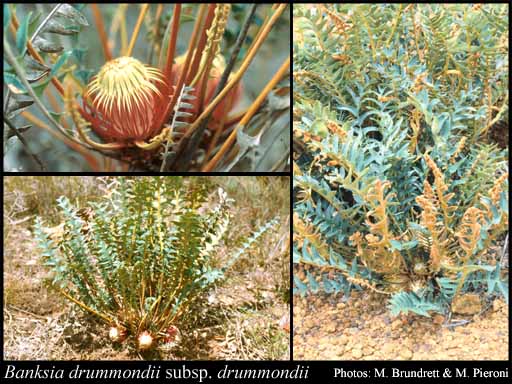- Conservation Code
- Not threatened
- Naturalised Status
- Native to Western Australia
- Name Status
- Current
Dense, non-lignotuberous shrub, 0.25-1 m high. Fl. yellow-orange, Nov to Dec or Jan. Sandy loam or clay with lateritic gravel. Plains, lateritic ridges.

Scientific Description
Shrubs, 1-1.5 m high; branchlets hairy. Leaves petiolate, alternate, 255-410 mm long, 25-75 mm wide, hairy; petiole 50-150 mm long; lamina flat, once divided, pinnately divided, divided to the midrib, with 10-22 lobes on each side, the margins recurved. Inflorescences tomentose (with matted or tangled, soft, woolly hairs), brown; innermost bracts 12-20 mm long, hairy. Perianth 40-42 mm long, hairy, all over, limb apex silky (with soft, shiny and appressed hairs), without awns; pistil 50-55 mm long, curved, style glabrous. Follicles glabrous, obovate, 16-20 mm long. Flowers in December. Occurs in the South-west (SW) Botanical Province(s), in the Avon Wheatbelt (AW), Jarrah Forest (JF), Mallee (MAL) or Esperance Plains (ESP) IBRA subregion(s).
Distribution
- IBRA Regions
- Avon Wheatbelt, Esperance Plains, Jarrah Forest, Mallee.
- IBRA Subregions
- Fitzgerald, Katanning, Southern Jarrah Forest, Western Mallee.
- Local Government Areas (LGAs)
- Albany, Cranbrook, Gnowangerup, Jerramungup, Plantagenet.